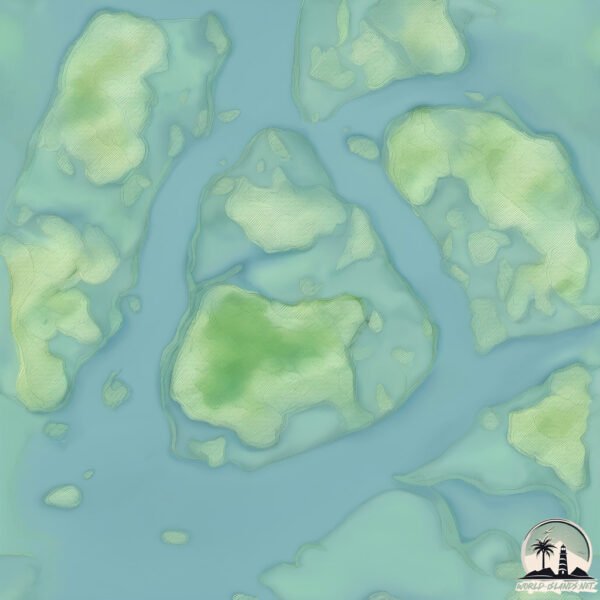Welcome to Maehwa-do , a Temperate island in the Yellow Sea, part of the majestic Pacific Ocean. This guide offers a comprehensive overview of what makes Maehwa-do unique – from its geography and climate to its population, infrastructure, and beyond. Dive into the details:
Geography and size of Maehwa-do
Size: 19.5 km²Coastline: 23.2 kmOcean: Pacific OceanSea: Yellow SeaContinent: Asia
Maehwa-do is a Medium Island spanning 20 km² with a coastline of 23 km.
Archipel: –
Tectonic Plate: Amur – A minor tectonic plate in the region of the Amur River at the border of Russia and China, involved in complex interactions with the Pacific and Eurasian plates.
The geographic heart of the island is pinpointed at these coordinates:
Climate and weather of Maehwa-do
Climate Zone: TemperateClimate Details: Humid Subtropical ClimateTemperature: Hot Summer
Climate Characteristics: With continuous rainfall and hot summers, this climate is common in some coastal regions, supporting diverse vegetation.
Topography and nature of Maehwa-do
Timezone: UTC+09:00Timezone places: Asia/TokyoMax. Elevation: 122 m Mean Elevation: 15 mVegetation: Evergreen Needleleaf ForestTree Coverage: 92%
The mean elevation is 15 m. The highest elevation on the island reaches approximately 122 meters above sea level. The island is characterized by Plains: Flat, low-lying lands characterized by a maximum elevation of up to 200 meters. On islands, plains are typically coastal lowlands or central flat areas.
Dominating Vegetation: Evergreen Needleleaf Forest
Vegetation: 13 vegetation zones – Exceptionally Diverse Island
Infrastructure and Travelling to Maehwa-do
Does the island have a public airport? no .
Does the island have a major port? no .
The mean population of Maehwa-do is 36 per km². Maehwa-do is Gently Populated. The island belongs to South Korea .
Continuing your journey, Kunkiijamu To is the next notable island, situated merely km away.
Hongdo Island near Maemuldo Island,Korea 매물도 앞 홍도 2025년6월4일07:20#shorts
Hondo Island near Maemuldo Island,South Area of Korea Coastal.
Hongdo Island near Maemuldo Island,Korea 매물도 앞 홍도 2025년6월4일07:20#shorts
Hondo Island near Maemuldo Island,South Area of Korea Coastal.
Hondo Island near Maemuldo Island,South Area of Korea Coastal.
exploring remote korean islands// hiking, biking, & seasickness
Hi, friends! Today we're traveling to some islands that are located ...
Hi, friends! Today we're traveling to some islands that are located off the coast of Mokpo! We'll be exploring Hongdo, Heuksando, ...
Korea's National Park Service offers virtual tour of Hongdo Island
천혜의 비경 경남 홍도를 한눈에! Hongdo Island in Korea's southwest is known for its ...
천혜의 비경 경남 홍도를 한눈에! Hongdo Island in Korea's southwest is known for its well-preserved natural land- and seascapes.
South Korea is classified as Emerging region: MIKT: Mexico, Indonesia, South Korea, and Turkey – Economies recognized for their development potential and emerging market status. The level of income is High income: OECD.
News – Latest Updates and Headlines from Maehwa-do
Stay informed with the most recent news and important headlines from Maehwa-do. Here’s a roundup of the latest developments.
Loading...
Please note: The data used here has been primarily extracted from satellite readings. Deviations from exact values may occur, particularly regarding the height of elevations and population density. Land area and coastline measurements refer to average values at mean high tide.

